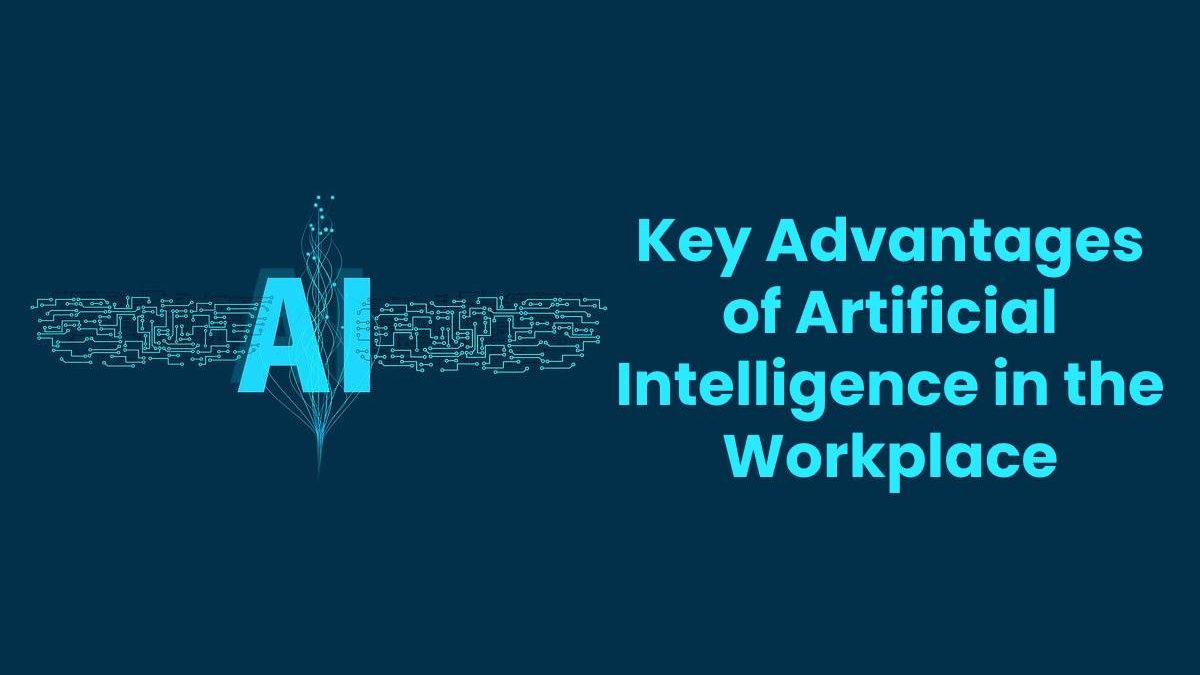Key Advantages of Artificial Intelligence in the Workplace
Much doom and gloom is surrounding artificial intelligence and how robots will increase unemployment. Many people are concerned about the possible replacement of human workers by machines and robots due to the rise of AI. The advancement of tech is seen as a threat rather than an opportunity for most people.
But that’s not happening. If anything, artificial intelligence will lead to the creation of many new jobs. The impact of artificial intelligence on the workplace has and always will be twofold.
With AI gaining prominence, self-learning technologies and black boxes will no longer be the panacea to any problem. Several organizations are already discovering the incredible benefits of AI, leveraging these advantages to gain true insight from their data while enhancing human intelligence.
Smart technologies are changing more than just our homes; they’re also making an edge in numerous industries and work settings. A recent EY report explains that organizations that can implement AI at the enterprise level increase operational efficiency, make better decisions faster, and innovate new products and services.
Let’s talk about some of the key advantages that artificial intelligence can bring to the workplace.
Table of Contents
Analyze Complex Data
Data is the CPU of a competitive business. AI can help decode data and provide valuable insights without requiring data scientists.
With AI-based big data analytics, you can:
- Recognize critical patterns of change.
- Observe isolated trends.
- Make sure companies are on the right track by creating detailed reports that help them assess their performance.
- Conduct a deep-content analysis and draw conclusions based on evidence.
- Investigate whether the behavior of the customer has changed that would affect the business’ overall bottom line.
- Estimate metrics the company should monitor to achieve higher performance.
Using AI products, you can create and fine-tune propensity models to identify high-profit cross-selling and upselling opportunities across product lines, customer segments, and personas. Propensity models are often used when developing new products and services to determine which products and services have the highest likelihood of being purchased. Many propensity models are built-in Microsoft Excel using imported data and thus take a lot of time to run. The whole process of creating, fine-tuning, and upscaling revenue strategies can be automated with AI.
By leveraging their employees’ potential, businesses can enhance customer service and make better business decisions. A quarter of organizations use ten or more AI applications. MMC Ventures says this increase in the total available market will result in more apps and related products like chatbots, process optimizations, and fraud detection.
Improved Customer Service
In a survey conducted by Accenture Global Consumer Pulse, 61% of respondents indicated that AI implementation could help in enhancing customer service. A prime objective for companies is to improve delivery times. An increase in resolution rates and work ethic can be achieved with AI-based solutions.
Human interaction will always remain an instrumental part of the business. As a matter of fact, the video chatting method is one of the ways that businesses are using to connect with their customers. Waiting time is reduced, and problem-solving is accelerated with multiple communication methods.
An increase in resolution rates and work ethic can be achieved with AI-based solutions for sales conversations with clients.
Improved Efficiency
It took more than a decade to address the issues of safety and security in the industry. Disruptive technologies were the principal concern of the age. But today, AI has brought about tremendous benefits to society. By generating new revenue opportunities, creating jobs, and reducing costs, has improved performance and efficiency.
In a world of increasingly automated work, human error has decreased and pushed them to adopt a strategic approach to value chains. Using AI for daily tasks has drastically increased employee productivity. It is giving importance to learning the value of taking calculated risks rather than taking shortcuts that can cost an organization millions of dollars. Having fewer administrative responsibilities makes it easier for humans to make mistakes and fix them more quickly.
Product Visibility
Workplaces are utilizing AI to evaluate and improve the usability of products constantly. It is one of the most challenging elements of new product development to create a user experience that is effective, engaging, and intuitive. This is done by transforming usability into a product asset.
The ability to deliver satisfying customer experiences becomes possible when AI techniques are incorporated into the product development cycle as part of usability. As an alternative to adding a new app, service, or device, artificial intelligence provides insights for an intuitive yet fun experience!
Foresee Market Demand
By using artificial intelligence, companies can forecast demand for novel products with excellent accuracy by identifying the factors that stimulate sales. The methods used to denote market demand for a next-generation product can range from the pragmatic approach of directly asking direct and indirect sales teams how many units they will sell to applying advanced statistical models. As a result of AI and ML, businesses are discovering previously undiscovered factors that affect consumer demand.
Furthermore, AI can develop hyper-personalized products for online customers through machine learning and advanced data analytics. The most successful AI applications are those which blend AI and human judgement and experience seamlessly.
Bottom Line
Machine learning and AI are making a positive contribution to new product development for companies of all sizes. AI-driven strategies and products, the market for IoT platforms will consolidate due to fast advancements in this field.
In the near future, artificial intelligence will transform both the workplace and society at large. In recent years, businesses have increasingly embraced these new technologies to ensure they implement AI systems that maximize and complement human performance and intelligence.
Even though artificial intelligence will be more productive than humans for repetitive tasks, humans will always excel in roles that require strong interpersonal relationships and imaginative thinking. As a result of improved automation, companies will see increased productivity and revenue.

